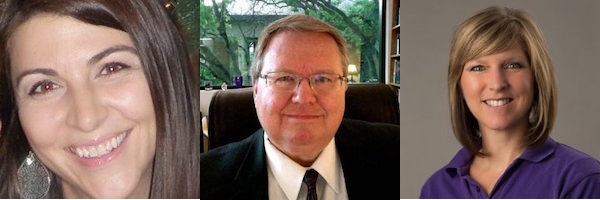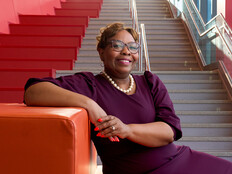Q&A: Inside an Award-Winning Approach to Educating Nontraditional Students
For the past two years, Washington Monthly magazine has named Weber State University the best two-year college for adult learners.
EdTech recently spoke with Bruce Davis, dean of online and continuing education; Andrea Jensen, executive director, digital learning and design, and Kristie Nielsen, director of continuing education marketing, about how the Ogden, Utah school has leveraged technology to engage both traditional and nontraditional students — and what’s changed since it began offering courses 18 years ago.

Andrea Jensen, Bruce Davis and Kristie Nielsen of Weber State University. Photos courtesy of LinkedIn
SIGN UP: Get more news from the EdTech newsletter in your inbox every two weeks!
EDTECH: What is a typical example of a Weber State student?
Nielsen: Fifty-six percent of our students qualify as nontraditional students — a term that is based on their age, if they have children, if they’re a veteran, married, divorced, things like that.
EDTECH: How did you choose a platform for online courses?
Nielsen: We use a campus learning management system called Canvas, which we selected as part of a statewide process coordinated with all other public higher education institutions in Utah.
There were several things that made it stand out. The system has an open application programming interface, which allows us to use third-party tools very easily.
The other thing we liked is that it’s a cloud solution. When we selected it, most [providers] hosted content on their servers or allowed you to host it on yours. With this cloud service, we can put up new servers in a matter of minutes to address an increase of usage, whereas other systems took weeks to respond — which doesn't meet our needs when an increase comes quickly in the beginning of a semester.
EDTECH: How have you prepared faculty members to offer material online?
Jensen: We began a semester-long professional development program for faculty over probably 12 years ago. It was a face-to-face program for probably the first eight years. Now, they come to meetings for two weeks, then we run a six-to-eight-week online component and another two to three weeks of face-to-face work.
We teach them about writing measurable objectives and aligning assessments to outcomes. We throw in a couple of modules on technology, which is probably why most sign up, but we want to give them great design principles first. We require them to design or redesign 25 percent of an online hybrid course.
EDTECH: Do you provide any additional feedback after that?
Jensen: We call it a best practice course review and we use a mix of several different rubrics for reviewing online courses. We require faculty to teach a course for a half-semester before we review it. The review covers the design of course and the facilitation between students and the professor.
EDTECH: Have you done anything to encourage faculty members to create online courses?
Davis: Our current model is $35 per student per credit hour. Larger section sizes are going to be more work and the faculty member gets more pay. The department has to be on board with it and it has to make sense academically.
More and more, [faculty members] have greater faith in online as a way to deliver courses and content.
Jensen: There are still some holdouts — people who think their content can’t be taught online. When I started working with online education, faculty had to provide justification as to why they were offering online courses. But attitudes have changed quite a bit. It’s so much more mainstream than it used to be.
EDTECH: Why do you think online learning has become more popular over the years?
Jensen: Students really value the flexibility. They’re not necessarily easier than a campus course. You’re going to put in the time, no matter what, but you can do it at 11 at night or on your lunch break.
Davis: We’re trying to raise the six-year graduation rate — online plays a key role in that. It provides flexibility if you need to take an extra course a semester to speed your time to completion. It’s an important tool in our bigger institutional strategy.









